Cat Nap: What It Is and How Long It Should Last
Related products
A cat nap refers to short, light sleep periods akin to the many brief restful moments experienced by felines throughout their day. Typically, naps are under 30 minutes, and such naps aim to refresh one's mind without entering deeper sleep cycles.
Sleep experts stress the importance of understanding the benefits and optimal timing of catnapping. Properly timed brief snoozes improve mood, alertness, and cognitive functionality; however, excessive or mistimed ones might disrupt nighttime slumbers.
Dr Sarah Mednick, author of 'Take a Nap! Change Your Life' states that "a nap—particularly the fabled power nap—enhances brain performance." She further mentions how NASA pilots report increased alertness on missions after taking 26-minute long naps—a statistical affirmation from space exploration pioneers.
Surveys conducted across offices in countries like Japan reveal productivity increases after introducing designated rooms for employees to indulge in quick rejuvenating siestas. Moreover, statistics depict nearly twice as much receptiveness to well-taken mid-day breaks between work schedules as to continuous engagements disrupting normal circadian rhythms.
Learning when precisely these power naps need to be scheduled depends heavily on individual fatigue patterns, but generally speaking, they are advised not much later than halfway through your daily schedule to avoid disturbances during regular resting hours at the end of the day.
What Is a Cat Nap?

Catnap is an informal term for a nap that lasts less than half an hour. The term derives from the way cats sleep several times a day and at night, which is several times shorter than humans' night's sleep.
Analysing the origin, Hence, 'cat nap" emerged in the middle of the 19th century when British writer Thomas de Quincey used this term while explaining the short rest before night, like a domestic cat is active during the day and sleeps at night.
Peculiar to this type of sleep, it becomes quite fascinating to be contrasted with other types, such as power or full naps. Taking a power nap usually entails sleeping a little longer, 20 to 30 minutes, to make up for lost nighttime sleep, which drastically improves cognition, as observed in the Sleep Research Society findings carried out over the years. However, going beyond this recommended timing might unintentionally contribute to awakening with fatigue cycle disruptions that are worse than before and, thus, do more harm than good.
Nap periods of about an hour in length enable a person to get a deep period of REM that has a profound creativity-boosting impact, in addition to better memory technologies of the brain among faithful users. These naps maintain balance in daily life and harmony with the hectic schedule in today's advancements.
Benefits Of Cat Nap
Physical Health Benefits
Short power naps are usually not considered valuable to the body and health; still, they are significant helpers in preserving good physical shape. The single advantage is that they reduce weariness and sleepiness that are likely to set in during the day without affecting night sleep. Such recharging takes care of energy supplies, and as such, any feeling of fatigue is eliminated from productivity.
Moreover, other qualitative studies, such as the one conducted by Dr. Sara Mednick from the University of California, show that taking a short power nap is essential in replenishing the human body's physiology at a cellular level, particularly in managing blood pressure and reducing the probable detrimental effects of cardiac diseases on owners' well-being.
Improved Alertness and Concentration
Besides having many physical advantages, the primary cognitive improvement also consists of exceptionally boosting attentiveness and focus among the participants who exercise frequently. The National Sleep Foundation substantiates the results by ascertaining that power naps of the duration of twenty minutes during mid-shift crank up concentration levels among workers who operate offices—a fact that is supported by Japanese workplace productivity figures compiled after the incorporation of nap-cum-rest periods in the regular working calendar.
Real-life experiences corroborate this adage and suggest that brief distraction leads to clear thinking and, thus, enhanced alertness during the following tasks. Moving is imperative for meeting the core need for modern life environmental Health Benefits.
Thus, cat napping is not much like forty-winking sleep; rather, it can be very beneficial in terms of psychological improvements. Periodic siestas are thus restorative in their buffering of stress and thus enhance mental health under pressure-bearing conditions. They illustrate how nature quietly offers balance-related solutions needed for daily life sustenance.
Memorization & boosted creativity.
Thus, the improvement of various cognitive executive functions is still another significant benefit associated with timely light sleeping, which helps memory functions and facilitates creativity among regular habit learners and users. Many scientific studies show that subjects are at their best after having had their customary nap, regardless of the time or length.
It is important to note that these short breaks not only help enhance the process of memorization but also make people more creative in problem-solving – a clear indicator of how the brain's operations are beneficial when deserved amounts of timely quality rest are given amid numerous essential life responsibilities nowadays.
How Long Should A Cat Nap Last?

In fact, it is possible to get confused about which nap length is the most suitable. The magic duration appears to be approximately 20-30 minutes because, while it still provides the user with marvellous benefits such as alertness and improved concentration, it is not sufficient to interfere with a user's regular sleeping patterns at the end of the day.
This recommendation is also supported by many other published research. A research study conducted by NASA stressed a known fact that its pilots were getting more attentive after a calculated 26-minute power nap. Such practical issues are supported by David Dinges from the University of Pennsylvania School of Medicine, responding that short naps offer significant payback in performance improvement for a relatively small price – worth integrating into people's daily schedules where possible within the constraints of real life.
Now, it is important to think of some times as the perfect window to sleep, preferred by each person and different for each personality type. Although it is wholly dependent on one's fatigue-feel pattern as well as other physiological characteristics of each individual, it affects the rest requirement differently.
These recharging intervals are coupled with other considerations to care for existing daily chores, making the evaluation another appraisal factor, particularly in ensuring optimal work output. At the same time, health issues are also given their due attention.
Tips For An Effective Cat Nap
Creating the Ideal Nap Environment
It is important to set the scene as the environment significantly determines the beginning of an enriching catnap session. A secluded and non-illuminated environment normally provides the best source of short-power sleep. Reducing brightness by using this bulb or having masks on the eyes to block out daylight helps duplicate nighttime, which is necessary for rallying the body's natural tools for early sleep establishment.
The optimization of comfortable positioning, such as sitting or lying down, also helps the body to relax faster and advance the sleep stages, which is fundamental to successful catnapping. Further, preventing possible interferences follows these setup attempts in a parallel manner; this can be the need to mute notifications from gadgets or, in general, search for areas containing lesser noise interferences when getting prepared for effective nap time/achievement aimed at rest times.
Timing Your Cat Nap
Primarily, the likelihood control gameplay truly outlines the success ratio. At the same time, the planning of 'power maps' By all means, can be described as the mid-afternoon periods, particularly @ 2-3 p.m., depict the most auspicious time intervals as well as exerting the lowest oscillations in the studied daily circadian rhythms.
Late afternoon/early evening napping is mainly focused on not jeopardising the regularity of nighttime or nighttime sleep; thus, as it is usually recommended to professional expert circles, one's last nap should be concluded at least three hours before bed.
Ways on How to Fall Asleep Fast
The integration of relaxation prior to the assumed breaks results in faster surrender to the necessary sleep modes, while progressive Muscular Relaxation, as a technique, widely assists in actions such as tensing muscles sequentially from head to toe, culminating in the reduction of resting muscular tension across the body.
Breathing procedures are given similar importance. Techniques that involve large, tidal-like breathing paired with pause intervals have a relaxing effect on mind-body systems, thus creating pathways to facilitate quicker transitions to the expected sleep states slightly faster than conventional means.
Avoiding Caffeine And Heavy Meals Before Napping
Caffeine and heavy meals should be taken cautiously as they will likely deter one from napping.
Original plausibility emanates from caring about the consumption habits preceding the proposed siesta timings! Caffeine and other stimulants have been indicated to shift the body's sleep chronotypes, meaning they should not be consumed for a few hours to nap.
At the same time, self-feeding during heavy meals or before a nap could create the urge of discomfort and wake the child up. Hence, the decision to eat light nutritional foods that can provide sufficient satiety without making the eater heavy is one of the best strategies to maximise the outcomes reaped from each 'cat nap' session.
Are There Any Downsides to Taking Cat Naps?
One of the drawbacks of any type of sleep during the day is that one may feel sleepy or suffer from sleep inertia, especially if the nap continues through the other deeper stages of the sleep cycle. The naps can produce the opposite effect to what has been expected; a person might wake up disoriented, feeling tired rather than refreshed—a situation known as 'sleep drunkenness.' Dr. John Shneerson of Papworth Hospital Sleep Centre has observed that confining the naps to 30 minutes significantly reduces such consequences while ensuring recovery from the nap does not place the body in long-term fatigue zones.
Another of the typical apprehensions is the interference with nighttime sleep resulting from taking long or, otherwise, taking afternoon naps. To counter such risks, it is necessary and possible to promote both helpful qualities and other healthy sleep patterns that involve conditioning, useful naps – or, at least, useful short daytime sleep in addition to merely night sleeps only – interfere with directing, or actively guarding beneficial, the total numbers of daily sleeping hours.
Rare occasions may see some people developing some form of addiction to repeated snoozes. Thus, compelling routine processes suffer when desired chances of quick naps are not sought during course days. This scenario can practically be minimised if utmost care was taken in observing moderate durations and frequencies each time planned napping timetables were set.
Bottom Line
A 'cat nap' summarises short naps one takes during the day, which shouldn't last more than half an hour. These naps can be linked to the preliminary findings of the cat's activities and the transition of human subjects' day-to-day activities. Other benefits include lifting the mood, feeling alert, and making one more expressive in terms of thinking.
Contrary to power maps or full-blown sleep, catnapping aims to increase the desired rejuvenation without actually getting to the deeper or risky levels of sleeping, which increases the probability that the sleeper could wake up fully groggy. Further elevating these efficacy levels is rotating them during favourable dayparts alongside the establishment of the necessary environment.
Concerning negative effects, they entail issues such as the disruption of nighttime sleep or the cultivation of dependency on regular napping, which, in the long run, hinder other scheduled therapies meant to boost productivity.
Correct application of relaxation methods for forming tactics for a fast fall asleep and nourishing habits such as meals before the siesta prevent undesirable consequences. In turn, positive results in the course of disciplined life schedules are effectively guaranteed, as well as performing balanced, health-promoting life regulations.
Frequently Asked Questions
How long should a cat nap last?
A cat nap typically lasts 20 to 30 minutes, providing just enough rest to help one feel refreshed and alert.
What is considered a cat nap?
'Cat nap' refers to a short, light sleep period. It originates in the natural behavior of cats, which take several brief naps throughout the day and night.
What is the meaning of catnap?
Interpreting 'catnap' simply denotes an act involving quick intervals of restful snoozing—precisely short-lived durations without crossing into deeper phases, generally attributed to longer resting periods.
Is a cat nap good or bad for you?
Catnapping has widely acknowledged benefits, including improved mood, increased alertness, and enhanced productivity; however, caution remains necessary regarding the timing and frequency of such practices. Such practices maintain regular nighttime slumbers and unaffected probability offices of unwarranted dependencies over time.
What to do after a cat nap?
Ideally, after waking up from a catnap, one might indulge in stretching exercises to clear off any residual drowsiness, then engage back into daily chores, ensuring revitalised states foster sustained attention spans, effectively finishing tasks ahead in the remaining hours after having taken their well-deserved break.






















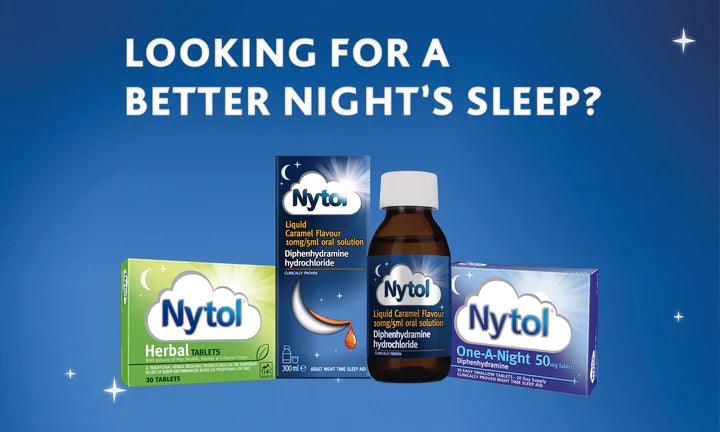


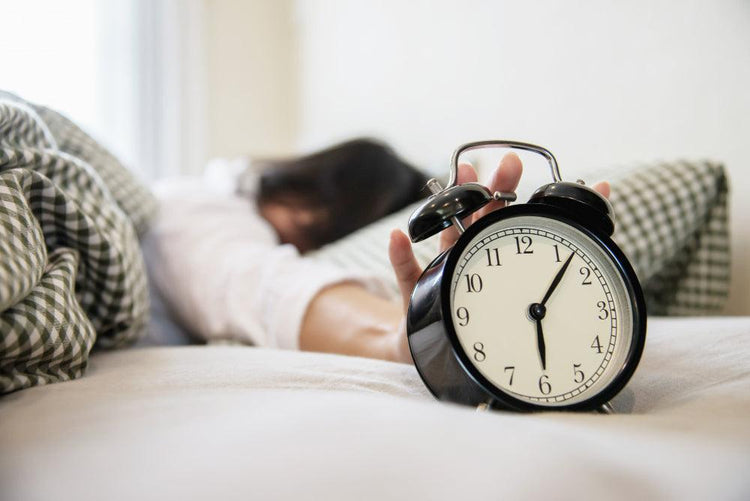




 Rated Excellent by 26,523+ Reviews
Rated Excellent by 26,523+ Reviews